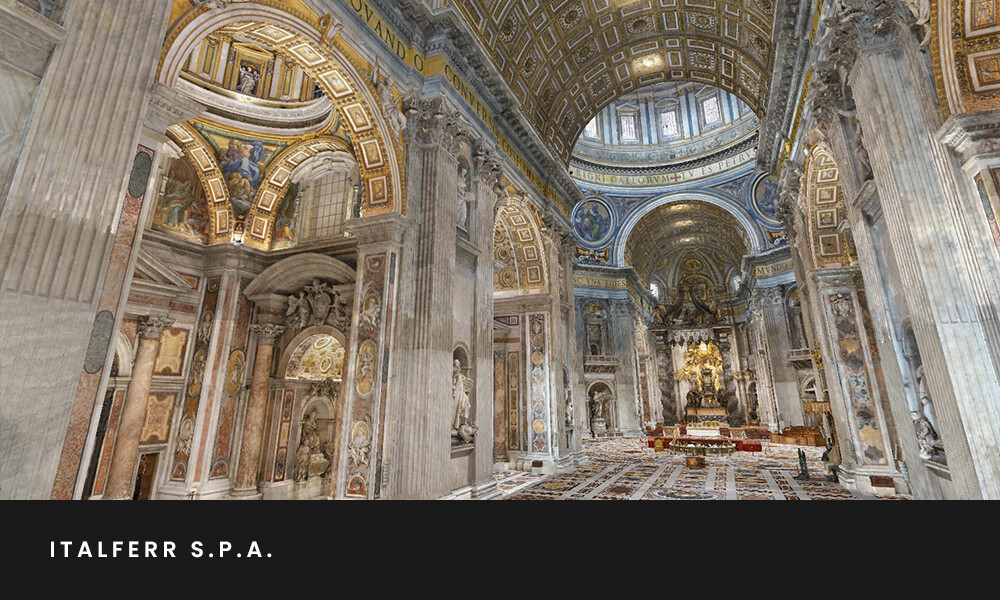Earlier this month in Singapore, Bentley Systems held their annual Year in Infrastructure conference, which featured the Going Digital Awards. Geo Week News had the opportunity to attend the event, being represented as both a juror for a Going Digital award as well as acting as press throughout the two-day event, coming away with a handful of broad themes from the finalist presentations, speaker sessions, and general conversations in Singapore.
Looking strictly at the awards, they are meant to highlight some of the most impressive and innovative infrastructure projects around the world, with this year’s awards garnering over 300 nominations representing over 50 countries. In total, there are 12 winners from different categories of infrastructure projects, all of which must utilize technology from Bentley Systems to enhance their projects and meet their deadlines and goals. The winner in the surveying and monitoring category – for which this author was a member of the juror’s panel – was Italferr, an Italian engineering firm.
The company, which generally works on transportation projects involving railways and bridges, had something of a unique presentation for this year’s awards, highlighting their work of creating a digital twin of the famous St. Peter’s Basilica in Vatican City. The company used a variety of reality capture techniques to create an accurate and high-quality digital twin, which also incorporates IoT sensors to monitor its status as renovation and restoration projects commence ahead of a major Jubilee celebration coming in 2025. In Singapore, Geo Week News spoke with Davide Porzio, CDE Manager, BIM Coordinator, and digital twin expert with Italferr, about the project.

As alluded to above, this was not exactly a typical kind of project for Italferr, now working on one of the world’s most iconic buildings and one that holds extreme cultural and religious significance. That said, both Porzio himself and the company as a whole had plenty of experience using Bentley technology prior to this. In fact, even Cardinal Gambetti, the archpriest of St. Peter’s Basilica, was at least somewhat familiar with these processes as he was a mechanical engineer by training prior to joining the church.
The uniqueness of this project did lead to some new techniques and an extensive process to accurately capture all of the Basilica. Given the cultural significance of the building, there was a different level of respect that needed to be baked into this workflow compared to more traditional workflows, Porzio relayed to Geo Week News.
"We had to find a balance between the technical requirements and the respect of the Basilica for its religious significance and artistic heritage. We also had to respect the public, because during the day there are a lot of people that visit the Basilica, so we can’t use all of our tools during the day.”
This in particular led to some potential barriers to the project, as they couldn’t easily, for example, fly a drone with a camera around the structure to create a model with photogrammetry. Instead, they used a laser scanner, which can still produce accurate point clouds at night. In total, they used both drones and terrestrial scanners to capture the outside of the structure. As for inside, the Basilica has high ceilings which means that a terrestrial scanner may not be able to capture everything well, but it’s also not practical to fly a drone around such an important building. This led to a new method for Italferr.
Porzio told Geo Week News, “During the night, when the doors were closed, we created homemade aerostatic balloons, and with this technique we flew inside the Basilica and acquired all of the necessary information without the risk of impact in such an extremely precious building. It was a wonderful experience to have the opportunity to visit the Basilica during the night, without the public.”
This was a methodology that was specifically needed because of how unique this project is for the firm, but it’s part of a list of lessons they can take away from the group, says Porzio. “This project has allowed us to extend our knowledge and pick up new techniques, because we have used these new kinds of solutions to acquire critical conditions and the survey data, and we’ve gained a lot of experience in the use of digital twins.”
In the end, Italferr collected over three terabytes of data, managed using Bentley solutions like ProjectWise, iTwin Capture, and MicroStation, and were able to deliver their model 20 days ahead of schedule. The model is shared among 30 stakeholders, each getting “easy, web-based access to all of the data,” according to Porzio.

There have been a number of uses resulting from the creation of this digital twin. The main reason, and the reason for the project to begin with, is to create a digital record of the Basilica, along with real-time data being fed by IoT sensors including tiltmeters and accelerometers, in preparation for restoration. In 2025, as noted above, the Jubilee celebration will take place, something that occurs just once every 25 years. This digital twin will be used over the next couple of years to ensure the Basilica is in top shape leading up to that event.
However, since the model’s creation additional use cases have popped up for the team beyond the typical monitoring capabilities associated with this type of project. For example, students in Vatican City have been able to make use of the accurate model of the basilica. Porzio said, “A lot of students have had benefits from the digital twin results. Students are using it to have a better understanding of the place where they will probably work in the future.”
Additionally, they have been “exploring all potential integrations between the digital twin and game engines.” Porzio notes that they have used these real-time engines in the past to run simulations for things like bridge operation and maintenance, and are exploring the possibility of utilizing these engines to, perhaps, create an immersive experience around the iconic building.






